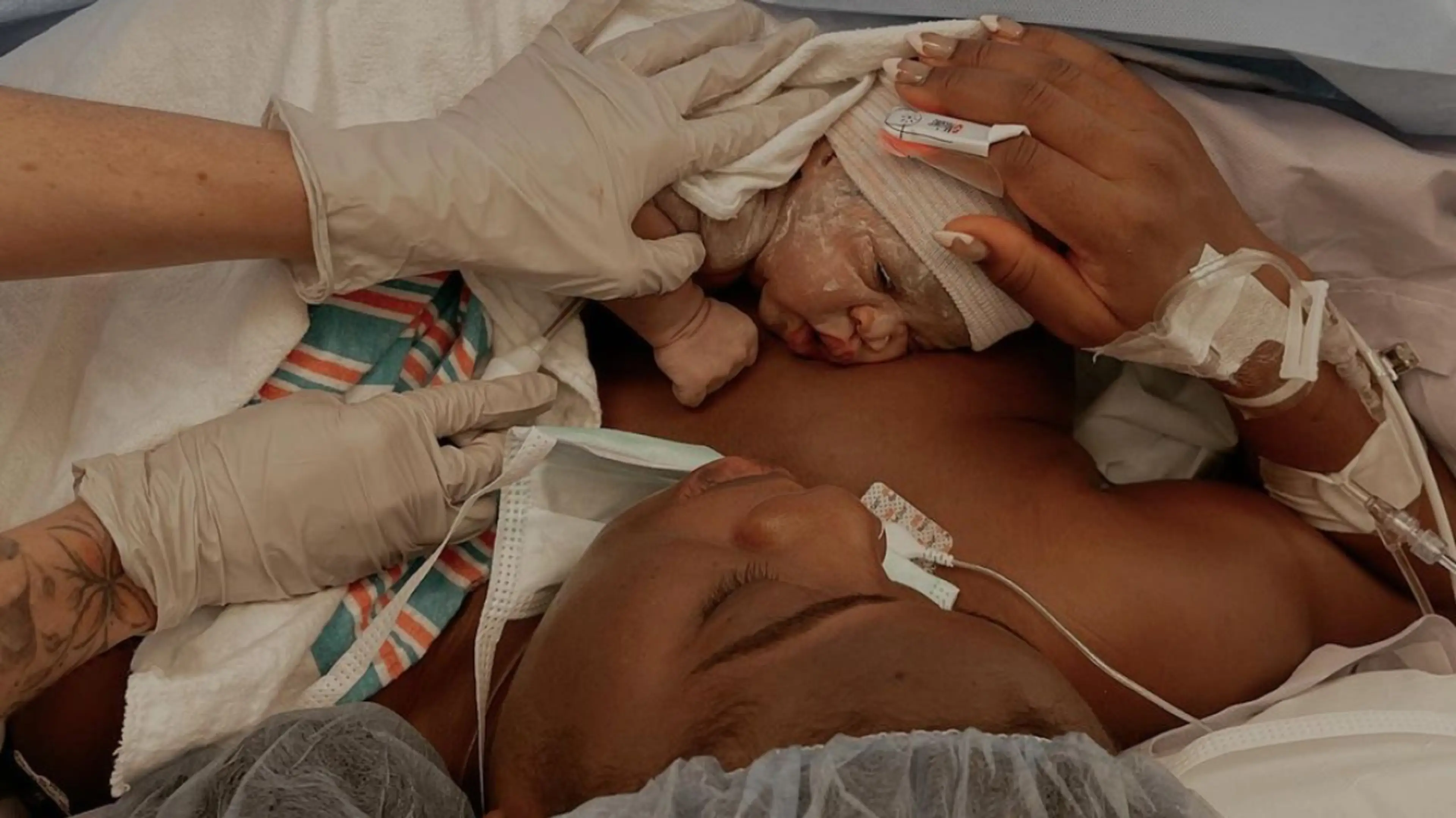Whether planned or unexpected, about one-third1 of all births in the United States are Cesarean deliveries—also known as C-sections. The idea of giving birth via C-section can be overwhelming, especially if you don’t know what to expect. Learning about the process can help put you at ease if you’re scheduled for a Cesarean or if something comes up and plans need to change.
What is a C-Section?
According to Johns Hopkins2 , a C-section is “the surgical delivery of a baby through a cut (incision) made in the abdomen and uterus.” There are two different types of incisions, vertical and horizontal. Both are made low on your abdomen and cut through several layers of tissue, into the uterus. The horizontal incision is what’s most commonly used.
Why Would I Need a C-Section?
There are a few different reasons someone may give birth via C-section; many occur after labor has started. “The most common reasons are that labor is not progressing as expected, the baby is in distress and needs to be born and breech presentation,” says Dr. Nicole Rankins, a board-certified ob-gyn and host of All About Pregnancy & Birth3 podcast.
A few reasons4 you may need a C-section include:
Fetal heart rate distress
Baby’s positioning, for example, if they’re in breech position5 and haven’t flipped head down
Labor isn’t progressing
Health conditions such as high blood pressure, diabetes, or pre-eclampsia
Health or developmental conditions of the baby
If you end up having an unplanned c-section6 , a surgeon will come in to discuss the procedure with you and help you prepare. You might have an hour or two before the surgery, or it might need to happen more quickly. C-sections can also be planned ahead due to some of these same reasons.
How to Prepare for a Planned C-Section
So, you’re having a scheduled C-section. Dr. Rankins recommends “[taking] a childbirth education class that includes information that walks you through what to expect if it comes to [a] Cesarean.” Familiarizing yourself with the process can ease any anxieties you may be feeling.
Having a planned C-section also means you’ll be able to discuss your options with your doctor and medical team in advance. This is where a birth plan comes in handy (yes, you can still have a birth plan for a Cesarean!). Write out your preferences and wishes.
Some things to consider in a C-section birth plan:
Traditional vs “gentle” Cesarean (more on what a “gentle Cesarean” is below)
Do you want music, special lighting, or any other changes to the room?
Would you like delayed cord clamping? Would you or your partner like to cut the umbilical cord?
Are you interested in vaginal seeding7 ?
Do you plan on breastfeeding?
Your preferences for newborn procedures (immunizations, vitamins, bathing, etc.)
Each hospital is unique and has its own policies, so be sure to talk to your doctor to see what your options are.
What Is a Gentle Cesarean?
C-section surgery is traditionally performed with a curtain separating you from seeing the procedure, but many hospitals offer what’s known as a “gentle Cesarean”8 , where either a clear drape is used or the curtain is lowered during birth so you can see your baby being born. A gentle Cesarean “creates a more relaxed environment and promotes early bonding,” Dr. Rankins says. Some hospitals even allow you to bring in music to play during your scheduled C-section. Don’t be afraid to ask questions or make requests if there’s a part of the procedure you’re concerned about.
What Happens During a C-Section Delivery
So you’ve checked into the hospital and it’s time for your C-section! A nurse will first give you an IV to provide fluid and medication and possibly shave the area where the surgeon will make the incision, right above your pubic hairline. A catheter will likely be placed in your bladder to collect urine, and you’ll then be given anesthesia (most commonly in the form of an epidural or a spinal block).
If you’re in labor and have already had an epidural, but end up needing a C-section, the surgeon will check and make sure it’s working properly. In an emergency, a surgeon might recommend general anesthesia, but most of the time local anesthesia (where you’re awake and have the use of your upper body) is enough.
You’ll most likely be alone with the medical team—which includes an anesthesiologist, your OB, attending physicians, and possibly residents—while you’re prepped for surgery. After that, your partner or support person should be able to join you for the operation and birth of your baby. They’ll be able to stand or sit next to your head and upper body and see what’s happening during surgery.
You might feel some pressure and tugging as the surgeon makes an incision in your abdomen and uterus and delivers your baby. Depending on the hospital where you deliver, you may or may not be able to see your baby being delivered. But as soon as delivery is over—and assuming you and the baby are doing okay—the doctor will hand the baby to you or your partner. If you plan to breastfeed, let your medical team know—you should be able to start right away if you haven’t had general anesthesia.
Once your baby is born, the surgeon will stitch up your incision and you’ll be moved to the recovery room. A C-section generally takes anywhere from 45 minutes to an hour9 from start to finish.
C-Section Recovery
C-sections are major surgery, so you can expect to stay a few extra days in the hospital than you would for vaginal delivery. Once you’re in the recovery room and your anesthesia wears off, nurses will help you practice walking around, which helps with recovery. The nurses will help you learn how to care for your incision, and you’ll be given pain medication as needed. “Don’t be afraid to take pain medicine,” says Dr. Rankins. “It’s a major surgery! It’s hard to get caught up if you wait until the pain is really bad to take pain medication.”
Over the next couple of days, both you and your baby will be monitored by the medical team until it’s time to go home. You’ll have time to rest, recover and get to know your baby—be sure to take it easy on yourself and soak it all in.
Frequently Asked Questions About C-Sections
Can I eat before my c-section?
According to Johns Hopkins10 , “if your C-section is planned and requires general, spinal or epidural anesthesia, you will be asked to not eat or drink anything for eight hours before the procedure.”
Can my partner be in the room during my C-section?
In addition to the medical team, you should be able to have your partner or chosen support person in the room with you during the procedure.
Will I be able to hold my baby right away?
As long as you feel comfortable moving your upper body, you’ll most likely be able to hold your baby and get that special skin-to-skin bonding time right away. If you’re planning to breastfeed, you’ll be able to do that as well.










